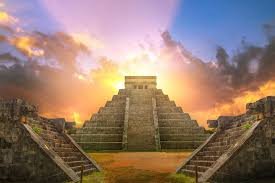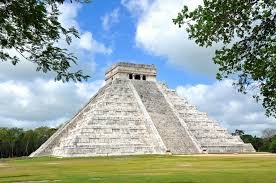Chichen Itza stands as one of the most iconic archaeological sites in the world, a testament to the ingenuity and grandeur of the ancient Maya civilization. Nestled in the heart of Mexico’s Yucatán Peninsula, this UNESCO World Heritage Site attracts millions of visitors each year, drawn by its towering pyramids, intricate carvings, and mysterious legends. But beyond its famous structures like El Castillo, Chichen Itza holds countless untold stories, hidden symbols, and scientific marvels that many travelers never discover.
The Rise of a Sacred City
Chichen Itza’s origins trace back to the Late Classic period (600–900 AD), when it emerged as a major political and religious center. The city’s name translates to “At the mouth of the well of the Itza,” referencing the sacred cenote (sinkhole) that played a crucial role in its foundation. Unlike other Maya cities, Chichen Itza was heavily influenced by the Toltecs, a warrior culture from central Mexico. This fusion of Maya and Toltec traditions is evident in its architecture, art, and even its brutal ball games.
Chichen Itza The Pyramid of Kukulkan
The most recognizable structure in Chichen Itza is El Castillo, also known as the Temple of Kukulkan. This step pyramid is not just an architectural masterpiece but also a sophisticated astronomical calendar. Each of its four sides has 91 steps, totaling 364, with the platform at the top completing the 365 days of the solar year. During the spring and autumn equinoxes, the setting sun casts shadows along the pyramid’s staircase, creating the illusion of a serpent slithering down—a representation of Kukulkan, the feathered serpent deity. Few know that inside this pyramid lies an even older, smaller temple, discovered when archaeologists explored its hidden chambers.
Portal to the Underworld
The Cenote Sagrado (Sacred Cenote) was more than just a water source—it was a gateway to Xibalba, the Maya underworld. For centuries, priests conducted rituals here, offering precious objects and even human sacrifices to appease the rain god Chaac. Early dredging operations in the 20th century uncovered gold, jade, and human bones, confirming ancient accounts of sacrificial ceremonies. Some legends say that on quiet nights, whispers of the sacrificed can still be heard echoing from the depths.

The Great Ball Court of Chichen Itza
Chichen Itza boasts the largest and best-preserved ball court in Mesoamerica, stretching over 500 feet in length. The Maya played a ritualistic ball game called pok-ta-pok, which had deep religious significance. Unlike modern sports, the game often ended with the sacrifice of the losing team’s captain—an honor, not a punishment, in Maya belief. The court’s acoustics are so precise that a whisper at one end can be heard clearly at the other, a feature that baffles engineers even today.
The Temple of the Warriors and the Thousand Columns
Adjacent to El Castillo lies the Temple of the Warriors, a massive complex adorned with columns depicting Toltec warriors. Nearby, the Group of a Thousand Columns once formed a grand marketplace and gathering space. Archaeologists believe this area was a hub for trade, where merchants exchanged goods like obsidian, jade, and cacao—the currency of the Maya world. Hidden beneath some columns are carvings of warriors holding still-beating hearts, a grim reminder of the city’s sacrificial rituals.
The Observatory of Chichen Itza
One of the most scientifically advanced structures in Chichen Itza is El Caracol, an observatory shaped like a snail. The Maya were master astronomers, tracking Venus, the sun, and other celestial bodies with remarkable precision. El Caracol’s windows align with Venus’s positions, which the Maya associated with war. Before major battles, priests would consult the stars from this tower, believing cosmic events dictated their fate.
The Hidden Secrets of Osario and the Cenote Xtoloc
While most tourists flock to El Castillo, few visit the Osario (High Priest’s Grave), a smaller pyramid with a deep shaft leading to a subterranean chamber. Inside, archaeologists found skeletons and offerings, suggesting it was a burial site for high-ranking priests. Nearby, the Cenote Xtoloc served as a freshwater source for the city’s inhabitants, proving that Chicken Itza’s survival depended on its mastery of water management in an otherwise arid landscape.
The Decline and Rediscovery of Chicken Itza
By the 13th century, Chichen Itza was mysteriously abandoned, possibly due to drought, warfare, or political upheaval. The jungle reclaimed it until explorers like John Lloyd Stephens and Frederick Catherwood brought it back to the world’s attention in the 19th century. Today, preservation efforts continue, but controversies remain—such as the debate over whether tourists should still be allowed to climb El Castillo after a fatal fall in 2006.
Chichen Itza is more than just ruins; it’s a living puzzle, where every stone tells a story of gods, warriors, and cosmic mysteries. Whether you’re drawn by its history, architecture, or legends, this ancient city never fails to leave visitors in awe.
Go to main page


